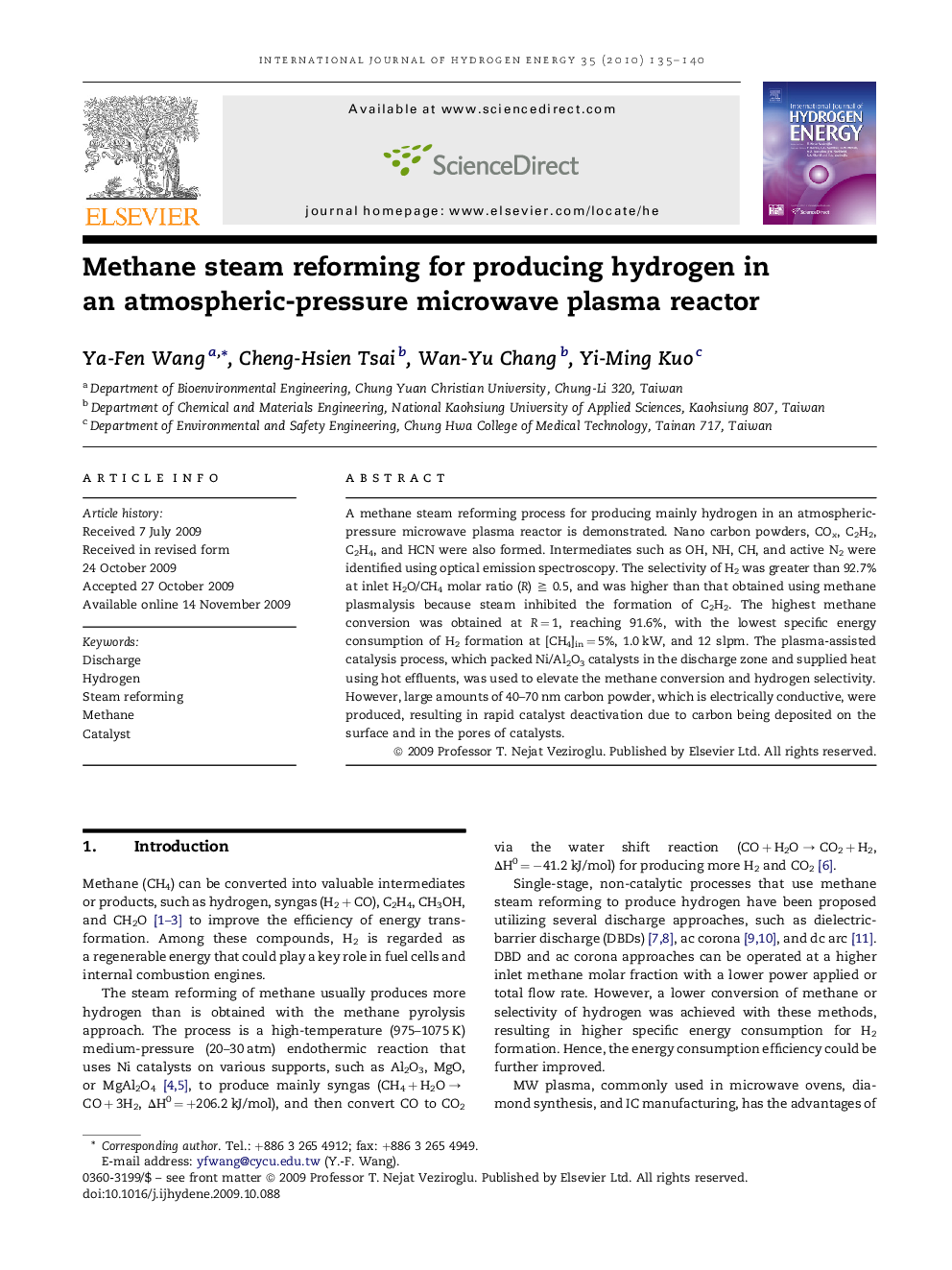| Article ID | Journal | Published Year | Pages | File Type |
|---|---|---|---|---|
| 1282972 | International Journal of Hydrogen Energy | 2010 | 6 Pages |
A methane steam reforming process for producing mainly hydrogen in an atmospheric-pressure microwave plasma reactor is demonstrated. Nano carbon powders, COx, C2H2, C2H4, and HCN were also formed. Intermediates such as OH, NH, CH, and active N2 were identified using optical emission spectroscopy. The selectivity of H2 was greater than 92.7% at inlet H2O/CH4 molar ratio (R) ≧ 0.5, and was higher than that obtained using methane plasmalysis because steam inhibited the formation of C2H2. The highest methane conversion was obtained at R = 1, reaching 91.6%, with the lowest specific energy consumption of H2 formation at [CH4]in = 5%, 1.0 kW, and 12 slpm. The plasma-assisted catalysis process, which packed Ni/Al2O3 catalysts in the discharge zone and supplied heat using hot effluents, was used to elevate the methane conversion and hydrogen selectivity. However, large amounts of 40–70 nm carbon powder, which is electrically conductive, were produced, resulting in rapid catalyst deactivation due to carbon being deposited on the surface and in the pores of catalysts.
